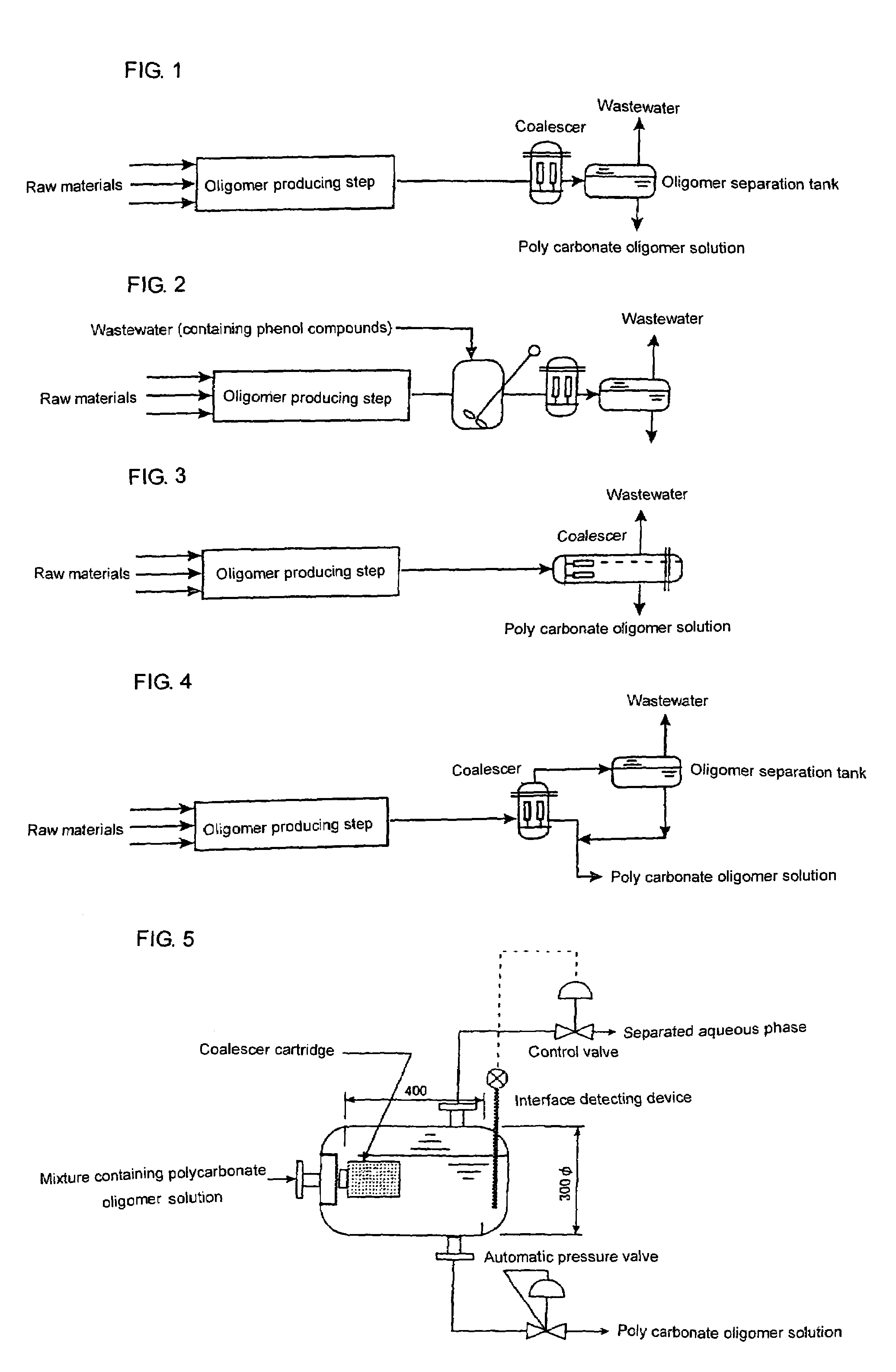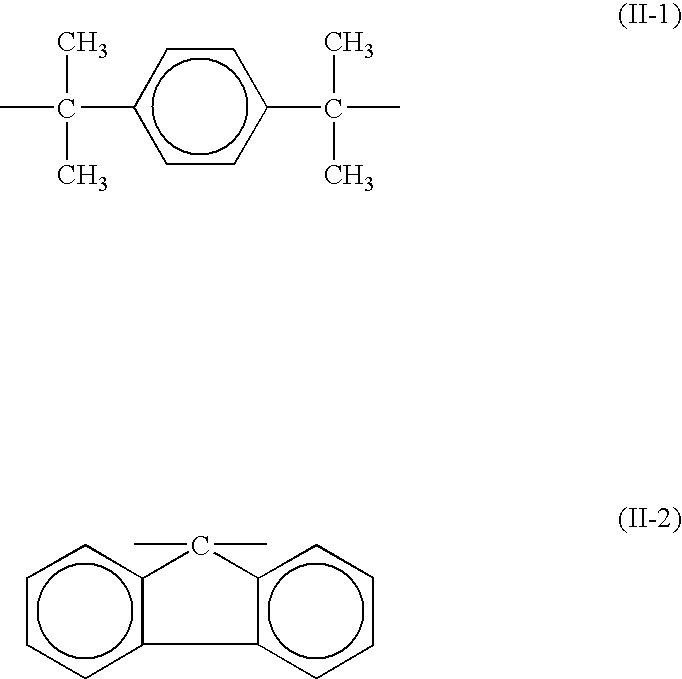Process for producing polycarbonate
a polycarbonate and polycarbonate technology, applied in the direction of sedimentation separation, centrifugal force sedimentation separation, vortex flow apparatus, etc., can solve the problems of phenol compounds, process must be periodically stopped for cleaning, high apparatus cost, etc., and achieve the effect of reducing the content of impurity-containing substances
- Summary
- Abstract
- Description
- Claims
- Application Information
AI Technical Summary
Benefits of technology
Problems solved by technology
Method used
Image
Examples
example 1
[0086]In the polycarbonate oligomer production procedures in Comparative Example 1, the emulsion solution of a polycarbonate oligomer-containing organic solvent was, before the still standing separation, first passed through a coalescer manufactured by Japan Pall Co., Ltd. (coalescer cartridge: “Phase Sep”, size: 100 mm outer diameter×150 mm length) and thereafter introduced into the tank for still standing separation.
[0087]The water content of an oligomer-containing organic solvent phase obtained after separation was measured and was found to be 1900 ppm by weight. Thus, the water content was found to be reduced to a value comparable to the saturated water concentration of methylene chloride used as a solvent. The solution gave a feeling of transparency in appearance.
[0088]The solid content of an aqueous phase obtained after separation was measured in the same manner as that in Reference Example and was found to be 53 ppm by weight. The separation was confirmed to be good.
[0089]Fur...
example 2
[0090]Similar to Example 1, a coalescer (COALESCER manufactured by Wako Industry Co., Ltd., coalescer element: made of glass fibers, element size: 144 mm outer diameter×705 mm length) was used to obtain a polycarbonate oligomer. The properties of the oligomer and its polycarbonate were measured to give the following results:
[0091]Water content of oligomer-containing organic solvent phase: 2,000 ppm by weight
[0092]Solid matter content of aqueous phase after separation: 110 ppm by weight
[0093]YI of polycarbonate plate: 2.6
Thus, the water content of oligomer-containing organic solvent phase was sufficiently low and the aqueous phase was able to be separated well. The heat resistance of the polycarbonate was sufficiently high.
example 3
[0094]A polycarbonate oligomer was produced in the same manner as that in Comparative Example. The emulsion solution of a polycarbonate oligomer-containing organic solvent obtained was passed through a coalescer having a structure shown in FIG. 5. The coalescer used was a laterally extending vessel having an inside diameter of 300 mm and a length of 400 mm. A coalescer manufactured by Japan Pall Co., Ltd. (coalescer cartridge: “Phase Sep”, size: 100 mm outer diameter×100 mm length) was mounted to one side of the vessel at which a nozzle was located. The vessel was also provided with an interface detecting device. To maintain the interface constant, a control valve was installed for controlling the discharging amount of an aqueous phase separated from a mixture discharged overhead from the reactor. The still standing separation time on the basis of the emulsion solution of a polycarbonate oligomer-containing organic solvent was about 30 minutes.
[0095]Using the oligomer-containing org...
PUM
| Property | Measurement | Unit |
|---|---|---|
| pressure | aaaaa | aaaaa |
| pressure | aaaaa | aaaaa |
| pressure | aaaaa | aaaaa |
Abstract
Description
Claims
Application Information
 Login to View More
Login to View More - R&D
- Intellectual Property
- Life Sciences
- Materials
- Tech Scout
- Unparalleled Data Quality
- Higher Quality Content
- 60% Fewer Hallucinations
Browse by: Latest US Patents, China's latest patents, Technical Efficacy Thesaurus, Application Domain, Technology Topic, Popular Technical Reports.
© 2025 PatSnap. All rights reserved.Legal|Privacy policy|Modern Slavery Act Transparency Statement|Sitemap|About US| Contact US: help@patsnap.com



